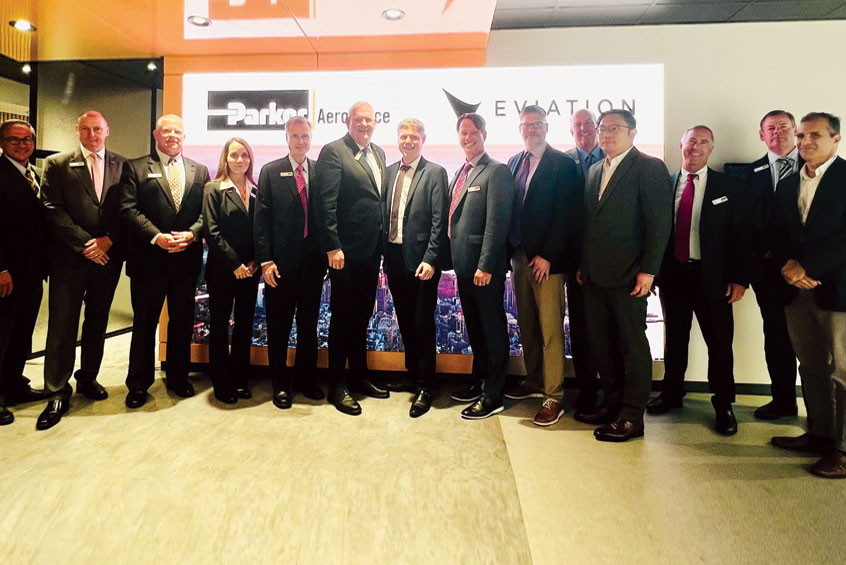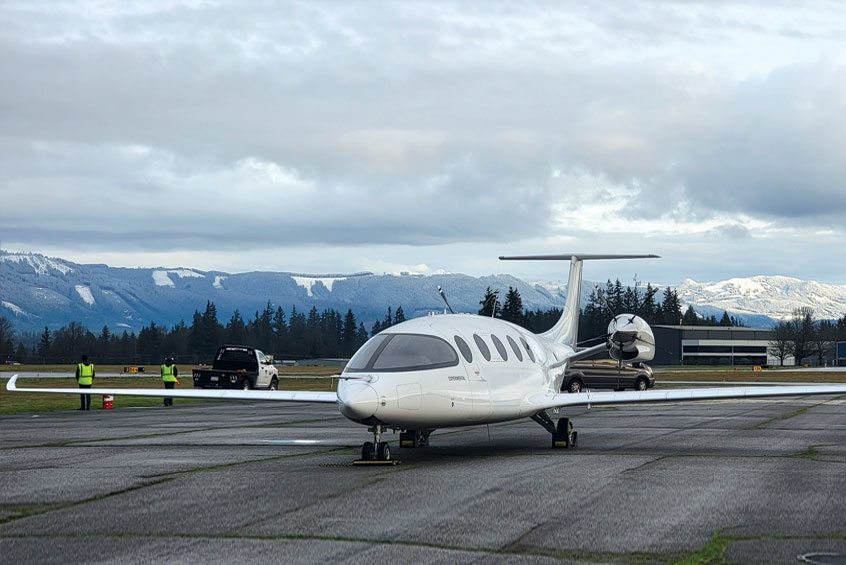ACE 2026 - The home of global charter.
 The bimonthly news publication for aviation professionals.
The bimonthly news publication for aviation professionals.



Eviation Aircraft has engaged Parker Aerospace, a business segment of motion and control technology company Parker Hannifin Corporation, to develop six technology system packages for the Alice all-electric commuter aircraft. The two companies are now entering the design phase for the production and certification phase of Alice.
“Parker is a trusted supplier within the industry, and its solutions will enable us to bring the best all-electric aircraft into the market,” says Eviation president Gregory Davis. “Like Eviation, Parker has a strong commitment to customer success, and together we will help the industry chart the path forward to all-electric flight.”
Environmentally, financially and socially sustainable, the Alice heralds a new era of transporting people and goods. In addition to eliminating source carbon emissions, the world's first all-electric commuter aircraft can accommodate nine passengers and is intended to offer reduced maintenance and operational costs for airlines while providing a smooth and quiet cabin experience for customers.
The six technology systems that Parker Aerospace will develop include:
- Cockpit controls: The human interface with the flight control system, consisting of sidestick, throttle, rudder control and switching devices.
- Electromechanical flap system: Featuring electromechanical actuators, electronic control units and position sensors. The system will incorporate patented eSync technology, which uses a single electronics control unit to command multiple motor-driven actuators installed along the flaps on the wing, saving space and weight.
- Thermal management: Advanced water-cooling equipment for battery and electric propulsion unit heat management, as well as specialised thermal materials for the battery pack.
- Hydraulic powerpacks: For steering and braking systems, these miniature hydraulic systems provide efficient power that is localised. These include reliable, proven components such as accumulators and hydraulic hose assemblies.
- Vibration and noise mitigation: Engine and inverter mounts for a hushed cabin environment.
- Sealing solutions: Elastomeric static and dynamic seal solutions such as a fire seal wall.
“Parker Aerospace is committed to doing its part in working toward net zero carbon emissions,” says group vice president, business development and global support Austin Major. “By collaborating with Eviation on the development of the Alice, we're able to take part in shaping the future of sustainable aviation. This significant opportunity marks an important step in the execution of Parker Aerospace's electrification strategy, which will improve motion control efficiency while helping customers achieve their environmental objectives.”